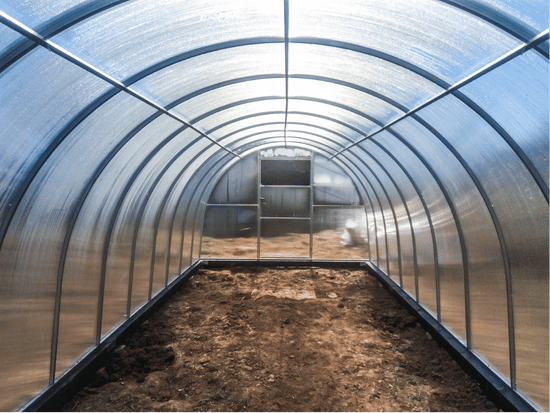
Properties and Overview of PC (Polycarbonate)
Overview:
 PC (Polycarbonate) is a high-performance thermoplastic renowned for its exceptional strength, transparency, and versatility. It is widely used in industries that require materials capable of withstanding impact, heat, and harsh environmental conditions while maintaining optical clarity. Its unique properties make PC a choice for various engineering and consumer applications.
PC (Polycarbonate) is a high-performance thermoplastic renowned for its exceptional strength, transparency, and versatility. It is widely used in industries that require materials capable of withstanding impact, heat, and harsh environmental conditions while maintaining optical clarity. Its unique properties make PC a choice for various engineering and consumer applications.
Production:
The production of polycarbonate typically involves the polymerization of bisphenol A (BPA) and phosgene, or other carbonate precursors, through a process called melt polymerization or interfacial polymerization. The resulting material can be processed using injection molding, extrusion, or thermoforming techniques, making it highly adaptable for various shapes and uses. PC can also be blended with other polymers or enhanced with additives to improve its performance in specific applications, such as increased UV resistance or flame retardancy.
Applications:
Polycarbonate is widely applied across industries due to its toughness, transparency, and heat resistance balance. In the automotive sector, it is used for headlamp lenses, interior components, and glazing, where its lightweight nature and durability contribute to fuel efficiency and safety. PC is a material for housings, connectors, and optical discs in electronics, thanks to its dielectric properties and precision molding capability. The construction industry employs polycarbonate for roofing sheets, skylights, and safety glazing due to its ability to transmit light while providing impact resistance. It is also a key material in medical devices, where its biocompatibility and sterilization resistance make it ideal for instruments, housings, and protective equipment. Additionally, PC is commonly used in consumer goods such as reusable water bottles, eyewear lenses, and protective cases for smartphones and laptops.
Summary:
Polycarbonate is a versatile and durable material that has become critical in modern manufacturing and design. Its impact resistance, optical clarity, and heat stability ensure its relevance across diverse applications. With ongoing advancements in material science, PC remains a cornerstone polymer for innovation in industries ranging from automotive and electronics to construction and healthcare.
See a comprehensive list of electrical, mechanical, physical and thermal properties for PC (Polycarbonate) below:
Electrical Properties of PC (Polycarbonate)
| Electrical Property (Units) | Value |
|---|---|
| PC (Polycarbonate) Dielectric Constant at 'Standard Temperature and Pressure' | 2.9 to 3.2 |
| PC (Polycarbonate) Electrical Breakdown Voltage at Atmospheric Pressure (kV/mm) | ~15 to 40 |
| PC (Polycarbonate) Electrical Conductivity (S/m) | 1.00E-16 to 1.00E-15 |
| PC (Polycarbonate) Electrical Resistivity at Room Temperature (25°C) (Ω·m) | 1.00E+15 to 1.00E+16 |
| PC (Polycarbonate) Magnetic Property | N/A |
| PC (Polycarbonate) Superconducting Transition Temperature (K) | N/A |
| PC (Polycarbonate) Temperature Coefficient of Resistance (°C⁻¹) | Unknown |
Unfamiliar with a property? Click it's description to be given a full definition in the GLOSSARY
See properties and overview for
ALLOYS and CHEMICAL ELEMENTS
popular in engineering
Require different units not displayed?
CONVERT VARIOUS UNITS HERE
Mechanical Properties of PC (Polycarbonate)
Unfamiliar with a property? Click it's description to be given a full definition in the GLOSSARY
See properties and overview for
ALLOYS and CHEMICAL ELEMENTS
popular in engineering
Require different units not displayed?
CONVERT VARIOUS UNITS HERE
Physical Properties of PC (Polycarbonate)
| Physical Property (Units) | Value |
|---|---|
| PC (Polycarbonate) Boiling Point at Atmospheric Pressure (°C) | Decomposes |
| PC (Polycarbonate) Chemical Composition (Element %) | (C16H14O3)n |
| PC (Polycarbonate) Cost ($/kg) | 3 to 5 |
| PC (Polycarbonate) Density at 'Standard Temperature and Pressure' (kg/m3) | 1200 to 1220 |
| PC (Polycarbonate) Glass Transition Temperature at Atmospheric Pressure (°C) | 145 |
| PC (Polycarbonate) Melting Point at Atmospheric Pressure (°C) | 350 |
| PC (Polycarbonate) Polymer Family | Thermoplastic |
| PC (Polycarbonate) Refractive Index | 1.58 to 1.59 |
| PC (Polycarbonate) Specific Gravity | 1.20 to 1.22 |
| PC (Polycarbonate) Viscosity at Melting Point (mPa·s) | Unknown |
Unfamiliar with a property? Click it's description to be given a full definition in the GLOSSARY
See properties and overview for
ALLOYS and CHEMICAL ELEMENTS
popular in engineering
Require different units not displayed?
CONVERT VARIOUS UNITS HERE
Thermal Properties of PC (Polycarbonate)
Unfamiliar with a property? Click it's description to be given a full definition in the GLOSSARY
See properties and overview for
ALLOYS and CHEMICAL ELEMENTS
popular in engineering
Require different units not displayed?
CONVERT VARIOUS UNITS HERE
 ADDED TO MY FAVORITES!
ADDED TO MY FAVORITES! REMOVED FROM MY FAVORITES!
REMOVED FROM MY FAVORITES!